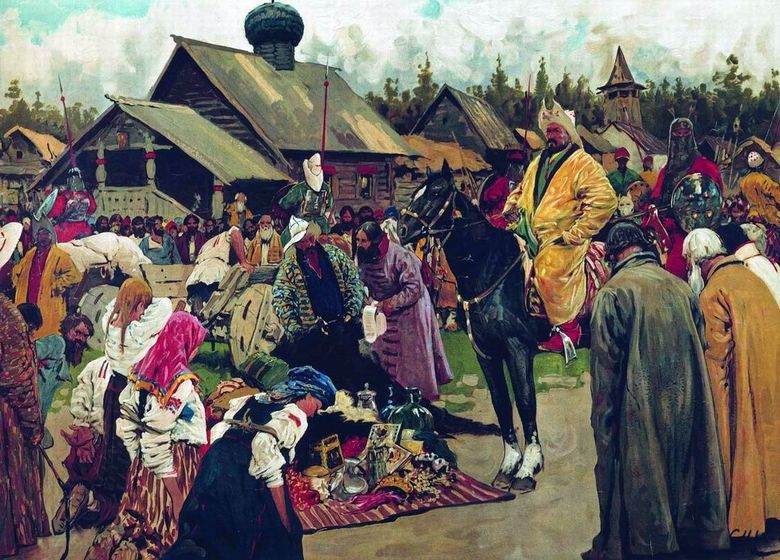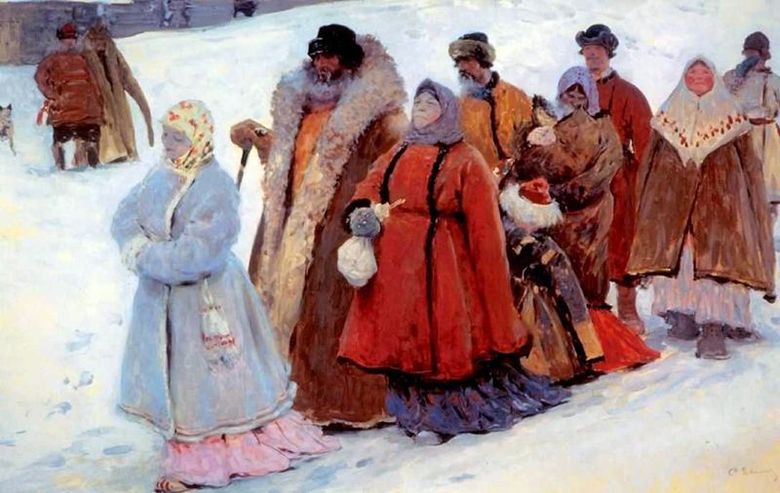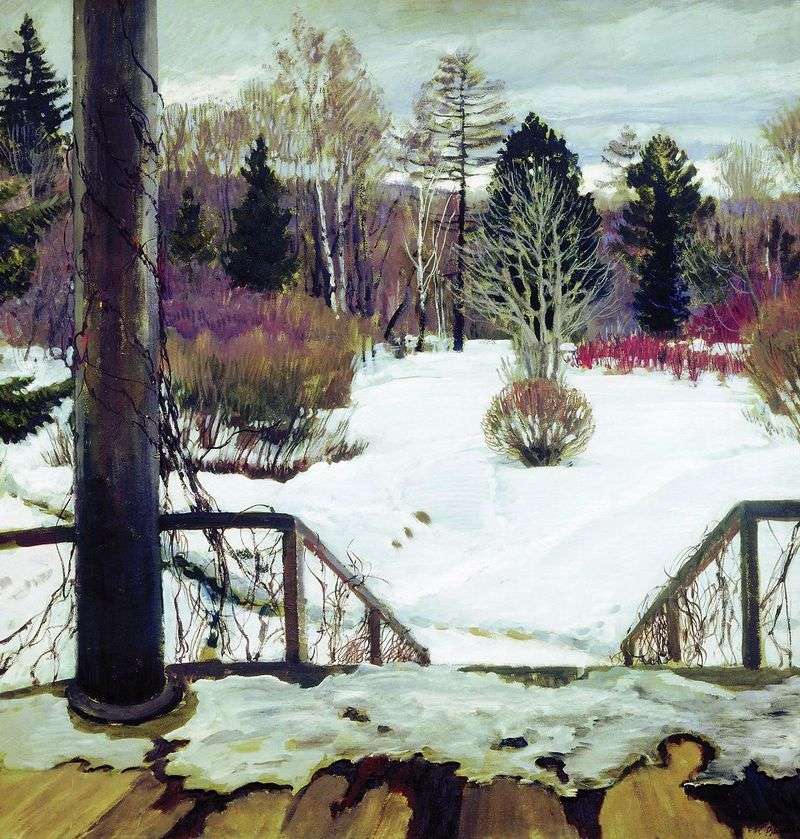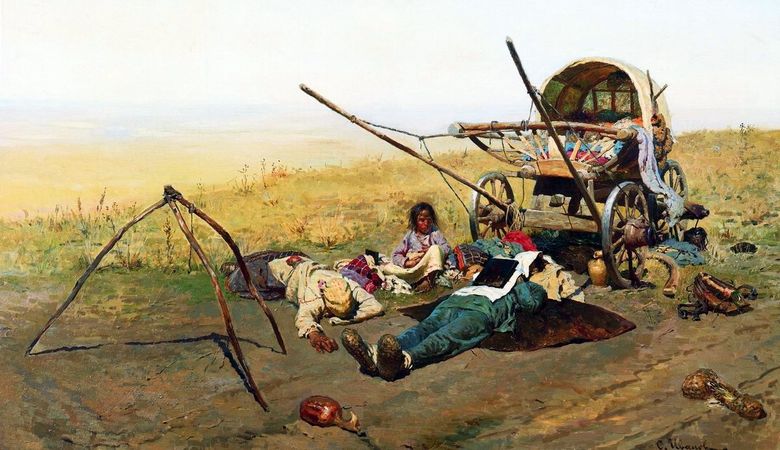
While retaining his involvement in the tragic moments of the history of the Russian people throughout his work, in 1909 Sergei Ivanov wrote one of his most recent works entitled “Baskakov.” In his work, the painter sought to convey the pain of the people’s soul, the everyday life of ancient Russia, full of hardships and privations, and not grandiose and victorious battles.
Captivated and humiliated, but retained their identity and way of life, people are forced to pay the Horde tribute to utensils, the fruits of their labor, depending on the fishery. On the canvas of the artist, the plot is brightly written, when the bukkak farmer, without going down from his horse, looks at the already prepared file, which is checked against the lists and loaded into the cart by forced Russian assistants.
Before him the best good is disposed, knitted and slave girls and young men kneeled. The author has depicted them as bright spots in the foreground, as an image of the centuries-old captivity of Rusich in disunity, without the possibility of resistance. Near the Baskak and around him, the warriors of the Tatar-Mongol horde are shown unobtrusively, but inevitably dark spots. Accompanying the representatives of the khan, they are ready at any moment by the slightest sign to recover the missing part of the collection, killing and robbing everyone.
The picture creates an incredible sense of presence and ownership of the event, which for that time was an innovation and a sign of modernism in the genre of historical painting. Expressiveness of poses and silhouettes, brightness and purity of color spots, unusual laconicism and decorativeness, sharpness of the sense of drama are distinctive, characteristic signs of Ivanov’s works, which could not be satisfied with the cute household subjects that were characteristic of the Wanderers.
 Baskaki – Sergey Ivanov
Baskaki – Sergey Ivanov On the road. The death of a migrant by Sergey Ivanov
On the road. The death of a migrant by Sergey Ivanov Family by Sergey Ivanov
Family by Sergey Ivanov Baskaki – Sergey Ivanov
Baskaki – Sergey Ivanov Familia – Sergey Ivanov
Familia – Sergey Ivanov Famille – Sergey Ivanov
Famille – Sergey Ivanov Spring is coming by Sergey Vinogradov
Spring is coming by Sergey Vinogradov Sur la route. Décès d’un immigré – Sergey Ivanov
Sur la route. Décès d’un immigré – Sergey Ivanov